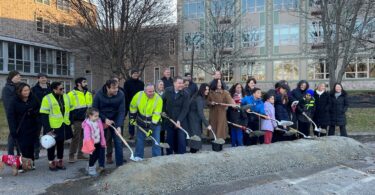by Klaus Reichardt
Very often facility managers are put in a position where they must ask their tenants to conserve water and use it more efficiently. In many situations, these managers do not realize that water conservation and water efficiency are actually quite different endeavors, and knowing the difference between them is growing in importance.
Most of us are aware that parts of North America have experienced extreme drought conditions in recent years and, what is of even bigger concern, it appears that in some cases, water shortfalls are becoming a way of life in parts of the country. Back in September, the U.S. Drought Monitor reported that more than half of the country was experiencing moderate to severe drought conditions, and more than three-quarters of western states were experiencing drought conditions.
But the deeper problem is that water supplies are drying up. One example is Lake Meade, which serves large portions of Southern California and Nevada. The Colorado River that feeds Lake Meade is also running low.
The causes for this may be drought, climate change, or other factors. But one thing that is definitely impacting water levels is the fact that the very states most impacted by severe drought—Arizona, California, New Mexico, and Nevada—have some of the fastest-growing populations. This means demand for water continues to increase while supplies are drying up.
It is for these reasons that managers and building owners should become much more familiar with the difference between water conservation and water efficiency. Both are going to play significant roles in how we operate our facilities and our homes in years to come.
Water Conservation
The term water conservation refers to a temporary situation. For instance, back in the 1970s, the entire state of California was asked to conserve water during one of the most severe droughts in the state’s history. Many homes that typically used approximately 300 gallons of water per day were restricted to only about 40 gallons per day. The state’s residents and businesses were asked to conserve water like this for several months. In time, however, rainfall events in many parts of the state helped end the drought and the restrictions were lifted. The removal of restrictions after a water crisis has ended is the hallmark of water conservation.
Water Efficiency
Whereas water conservation looks at water issues as temporary, water efficiency takes a long-term view. Water efficiency involves looking for ways to reduce water consumption for years to come, and fortunately, new technologies are helping us to do this.
Did you know that Phoenix, Arizona, which is now America’s fifth largest city, is delivering about the same amount of water to its population today as it did a decade ago, even though its population has increased by 28 percent? To achieve this, the city’s residents took a number of significant steps to use water more efficiently, such as:
- Native plants and vegetation are used for landscaping of homes and commercial facilities.
- Programs to recycle water for non-human use have been implemented.
- Water infrastructure has been improved, removing leaks and waste common with old infrastructure.
- Farmers now use water more carefully, eliminating waste.
- Property owners are encouraged, often through tax rebates, to replace water-guzzling bathroom and restroom fixtures with much more efficient systems.
For building owners, the last step mentioned can often make the biggest dent in water consumption and prove one of the most effective ways to use water more efficiently. In most facilities, the greatest amount of water is used in the restrooms. Replacing older fixtures or adding aerators to faucets can significantly reduce consumption. Another step is to install systems that use little or no water. For instance, in many Arizona state-owned buildings, only waterless urinals may be installed. These systems save as much as 40,000 gallons of water annually and have worked efficiently and effectively for years.
We often hear dire warnings about water shortages. The good news is that there are solutions. If a city the size of Phoenix is using the same amount of water today while serving a much larger population, that tells us there are many steps we can take to conserve water in an emergency and use it more efficiently over the long-term.
A frequent speaker and author on water conservation and water efficiency issues, Klaus Reichardt is founder and CEO of Waterless Co. Inc, Vista, CA, makers of no-water urinal systems and other restroom products.










